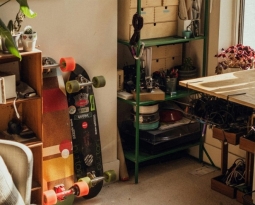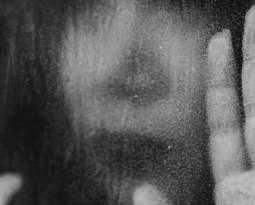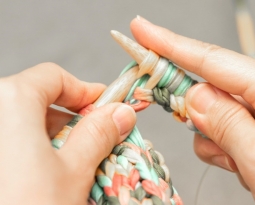Earlier in the summer, along the banks of the Thames on London’s South Bank, an outdoor gallery space exhibited 50 large-scale portraits displaying the smiling faces of 50 different people.
People of all genders. People of all ages. People with their families. People on days out. People who seemingly didn’t have a care in the world. Pictures of normality. Pictures of everyday life. Moments in time.
However, these moments in time were now all the more poignant, because these 50 pictures were the last pictures taken of the subjects in the final few days before each one died by suicide.
The exhibition, entitled ‘The Last Photo’ was organised by the Campaign Against Living Miserably (CALM) as part of a national campaign to raise awareness of, and challenge the stigma and stereotypes, surrounding suicide.
A recent YouGov survey (June 2023) revealed that 61% of respondents would find it difficult to tell someone if they felt suicidal, but also that 51% of those polled said they would not feel confident in being able to help someone at risk. Additionally, approximately only a quarter of those asked believed that people that were struggling with their thoughts would joke and smile and share happy photos on social media.
These figures highlight how the perceived presentation of suicidal tendencies are often concealed, and the exhibition aimed to encourage people, or ‘us’ as individuals, to start engaging and talking about an issue that sees 125 people take their own lives each week in the UK.
So, how can we as individuals begin the process of this engagement in some small way?
It is widely accepted that more often than not, social interaction and connectivity can have positive benefits on mental health, and often times during the counselling process, client’s support networks are explored as a way to encourage individuals to seek, and hopefully establish, beneficial interaction outside of the therapy rooms.
Given that most of us carry around mobile phones, we have the opportunity to connect at any given moment. Yet for some, in this world of increased access, it can highlight a lack of connection and amplify a sense of isolation, where people are unable to express their concerns, often hiding behind the ‘smiling mask’ many of the exhibition’s pictures portray.
With this in mind, these ‘pocket laptops’ can be used as vehicles for alternative and creative ways of connecting to our regular friends and acquaintances, or to those who we haven’t been in touch with for a while, who may, or may not, be struggling.
We can take photographs, make videos and record with our phones to forward on if we desire, or we can send old pictures to reflect on past memories. Alternatively, we can search for places to go, events to see, and explore and share a multitude of information from the internet, all of which could spark a discussion.
Music search and streaming providers such as Spotify, allow us to access pretty much any song (and beyond) that we can think of. Sharing music with others can remind us of places, people, good times, a mood, a scene. Lyrics can tell stories or express feelings and emotions in ways that we may not be able to verbalise ourselves.
There is a plethora of greetings card producers that we can use to send people personalised messages, so why does it have to wait for anniversaries or special occasions to feel the need to connect?
By being available, we can use these opportunities, discoveries, and suggestions, creative or otherwise, to form the basis of a connection in different ways, which may invite a response and stimulate a conversation that may be beneficial to someone’s wellbeing. Most importantly, these seemingly innocuous connections may lead to other concerns being aired if someone feels the need to explore deeper issues that may be bothering them.
As ‘The Last Photo’ exhibition shows, everyday images can be just as powerful in sending a message and starting a conversation, and as most of us have phones that can be used as our ‘tools’ to create and produce, we have the scope to tailor our connections specifically to particular individuals or groups.
September 10th, 2023, marks World Suicide Prevention Day, and whilst it is important to recognise this distressing subject with a specific day, we as individuals can do something every day, smaller in nature, but just as important to create a connection that someone may be looking for to avoid becoming one of the 50 photos in the future.
In conclusion, how we think and connect with the world through creativity is not the sole preserve of artists with the intention of having a piece of work adorning a gallery wall… we all have the capability to create that ‘Smile in the Mind’ for someone that may start or change the course of a conversation for the better.








